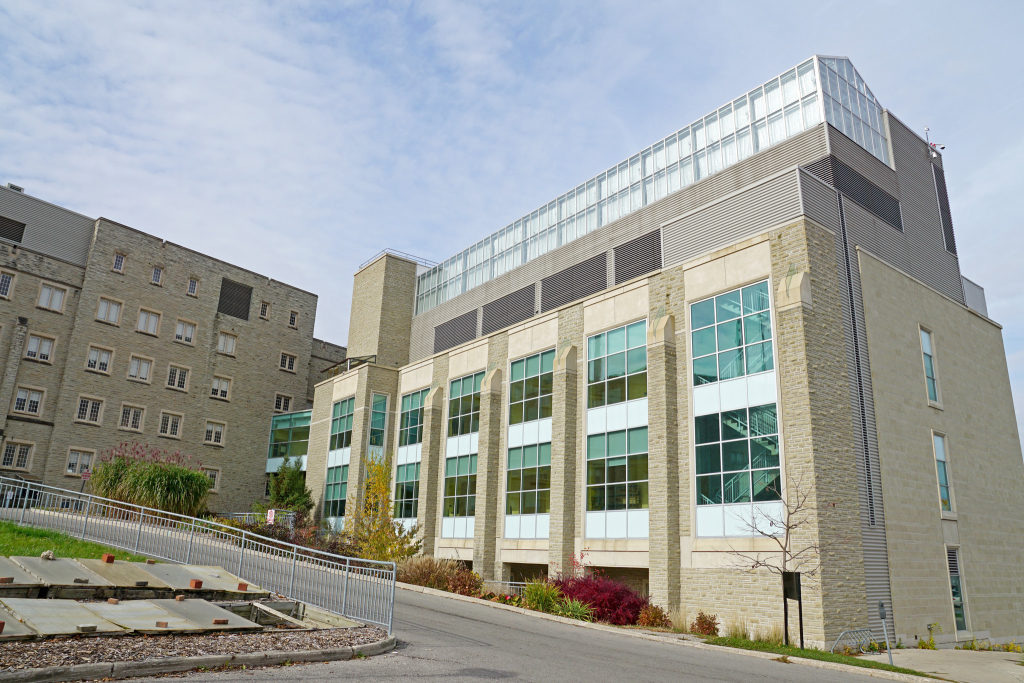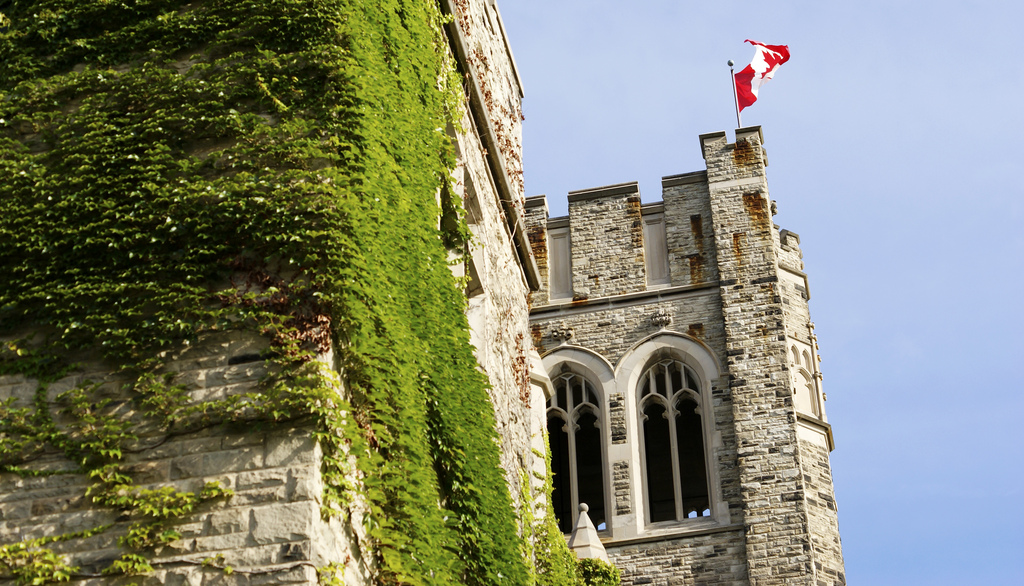When it comes to problems related to wastewater treatment, water resource management and groundwater remediation, Western University’s researchers are leading the way in finding the answers.
“We have more than 50 researchers involved in water research,” says Douglas Keddy, Western’s research communications manager. “By combining their strengths with cutting-edge research facilities, we are finding innovative and effective solutions to current water challenges.”
Over the past few decades, the London university and its partners have invested millions of dollars into establishing world-class research facilities where experts, in partnership with government and industry, are tackling a variety of water issues.
One of these facilities is the Southern Ontario Water Consortium’s (SOWC) wastewater facility set up at the City of London’s Greenway Wastewater Treatment Plant. This facility is a partnership between the university, SOWC and the City of London. The City of London provides not only the physical space and access to an active treatment plant, but has made a significant financial investment and remains an active partner. The unique facility provides unprecedented access to real-time municipal wastewater at various flow rates of up to 4,500 m3/day as well as a variety of process streams for full-scale testing and demonstration of new wastewater treatment technologies.
Western’s academic lead for the SOWC’s wastewater node is engineering professor George Nakhla. He has expertise in treatment of municipal and industrial wastes and landfill leachate, biological nutrient removal processes, membrane bioreactors, fluidized bed bioreactors, anaerobic wastewater treatment, pre-treatment of biosolids to enhance anaerobic digestion and conversion of high-strength organic wastes to green energy. He has developed five patents on wastewater and biosolids treatment technologies that are in various stages of commercialization. He has also conducted numerous treatment studies and pilot tests at municipal and industrial wastewater treatment plants across Ontario and developed process designs for various treatment systems, including the first communal biological nutrient removal system in Ontario.
Nakhla says SOWC’s infrastructure offers a platform that is ideal for industry looking to advance and commercialize treatment technologies.
“This facility has definitely helped strengthen Western’s relationships with its industrial partners,” he says. “I have recently submitted multi-million dollar proposals aimed at advancing state-of-the-art wastewater treatment technologies. These technologies utilize approaches that shift the focus of wastewater treatment from a necessity mandated by environmental regulations to an opportunity for resource recovery.”
In addition to his work connected to the SOWC, Nakhla also leads The Clean Technologies for Water Refining and Nutrient Energy Recovery (TWNER) program at Western. This program is geared towards providing graduate students with research and training experiences in the water and wastewater industry. There are 11 researchers involved from five Ontario universities as well as three international institutions and universities in the United States, Scotland and Israel. The program also entails 13 government and industrial partnerships.
Some of the research themes TWNER researchers are currently involved in include high-rate wastewater treatment technologies, biosolids and odour, combined sewer overflows treatment, water reuse and microbiology and ecotoxicity.
In addition to its research groups dedicated to innovations in wastewater treatment, Western is also making strides in water management and protection through its Great Lakes Futures Project led by Irena Creed, the Canada Research Chair in Watershed Sciences. The project is an international partnership of 21 Canadian and U.S. research institutions focused on protecting and managing the Great Lakes and St. Lawrence River Basin by informing strategic policy formulation, framing research priorities and helping train the next generation of Great Lakes researchers.
Creed has more than 20 years of experience working in watersheds draining into the Great Lakes and is an international leader in watershed sciences with particular expertise in hydrology, biogeochemistry, geographic information systems, remote sensing and simulation modelling. She is the founder and leader of the Catchment Research Facility at Western, an advanced monitoring, analytical and modelling facility established to analyze catchment processes. The research underway at the facility provides a reference against which to measure the consequences of human activity on the landscape in order to help industry, government and environmental agencies assess and predict these impacts.
“Our research at Western seeks to discover how freshwater wetlands, streams and lakes function and to then predict how these functions and the important services that society garners from them will change under future climatic conditions,” says Creed. “Western’s internationally-recognized work on water and the ecosystem services that wetlands, streams, lakes and oceans provide has drawn interest from governments, industry and non-government agencies. They are interested not only because of the scientific excellence of our work, but because we as faculty are committed to translating our scientific findings and affecting positive change through improved policies and practices related to water management.
Western’s newest research centre dedicated to water resource management and protection is the Thames River Experimental Stream Sciences (TRESS) Centre, an innovative outdoor facility located at London’s Adelaide Pollution Control Plant.
“This facility is geared towards protecting aquatic ecosystems, water quality and ecological health at the river level by looking at how land use affects our waterways,” says Keddy.
Led by geography professor Adam Yates, the TRESS centre allows researchers to study the impact of nutrients and other river contaminants by enabling them to integrate existing and future monitoring data from landscape-scale observational studies into controlled and replicated stream experiments that model actual local rivers. This information will give watershed planners and managers critical insight into potential outcomes of decisions regarding future land use activities in the rivers.
Western is also home to The Biotron Experimental Climate Change Research Centre, a $35-million facility that specializes in the simulation of natural environments. It is the world’s first facility of its kind that enables researchers to design self-contained mini-ecosystems.
“Research conducted in the Biotron facilities is leading to a better understanding of how natural ecosystems respond to a changing environment and how such changes impact the well-being of both natural and human world,” says director Brian Branfireun.

The Biotron Experimental Climate Change Research Centre at Western University. Copyright: Western University
The Biotron houses a microscopy and data analysis suite featuring the latest confocal, digital light and fluorescence, transmission and scanning electron microscopy technology. There is also a fully-equipped analytical laboratory with a range of instruments, including inductively coupled plasma-mass spectrometry for the measurement of elements and compounds in water, soil, rock and biological materials.
This unique facility is available to researchers, industry and government from across the globe. There are also dedicated technicians and specialists to help remote users conduct projects.
Another research group at Western attracting international interest is Research for Subsurface Transport and Remediation (RESTORE), a team of more than 20 researchers focused on the sustainable management of our water resources through the development of engineering technologies as well enhancing our understanding of natural hydrogeologic systems. Key research areas include soil and groundwater contamination and remediation, surface-groundwater interactions and green roof technology. RESTORE’s projects combine high-tech equipment, field research, advanced computer modelling, strong industrial partnerships and commercialization with national and international collaborations.
In addition to cultivating top water experts and establishing high-tech research facilities, Western recognizes that developing partnerships with government and industry is also integral to solving current water issues, says Keddy.
“Our researchers are definitely looking for more partners and are open to developing more projects with industry and government,” he says. “Water is one of the world’s most precious assets. It is critical we leverage the expertise of our researchers, governments and industry partners to find new ways to protect and improve access to water sources around the world. SOWC has significantly advanced our ability to do that.”


